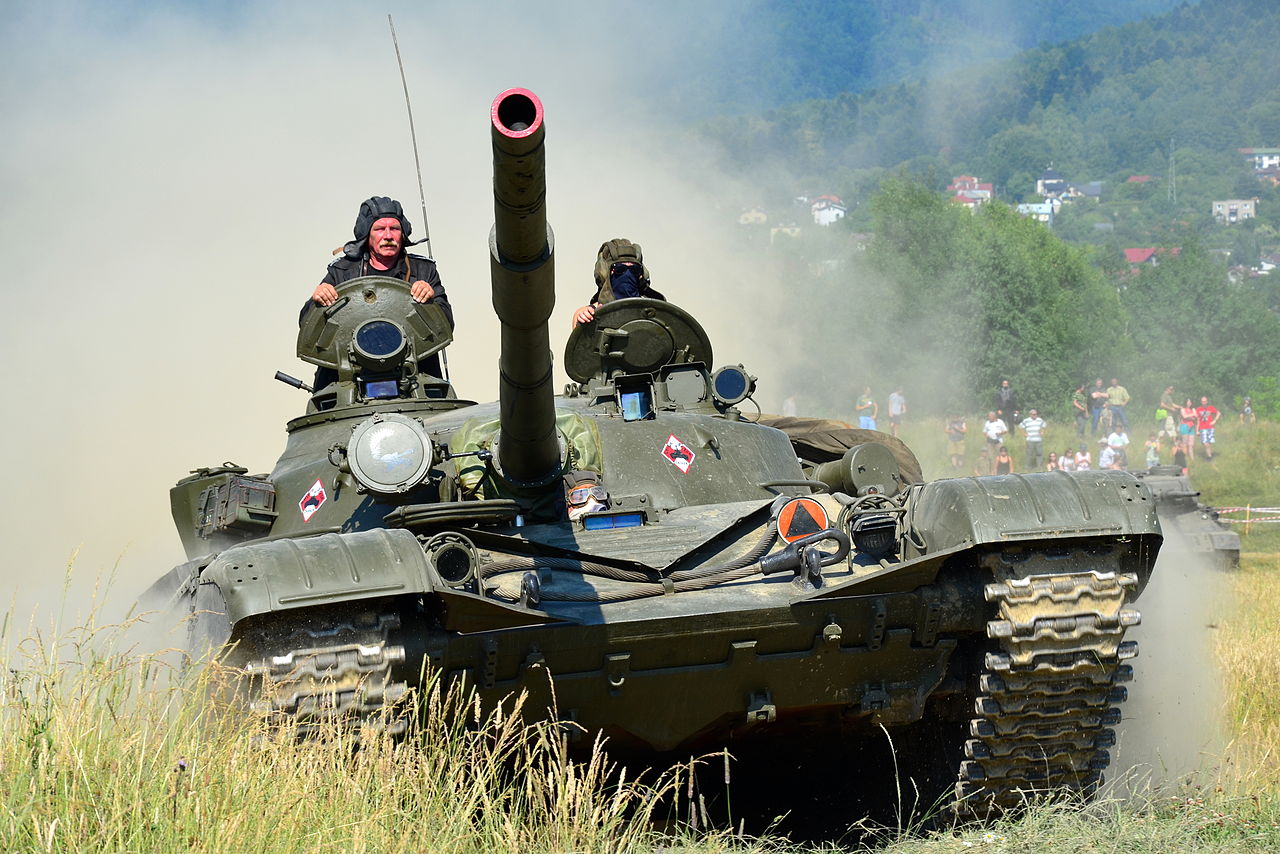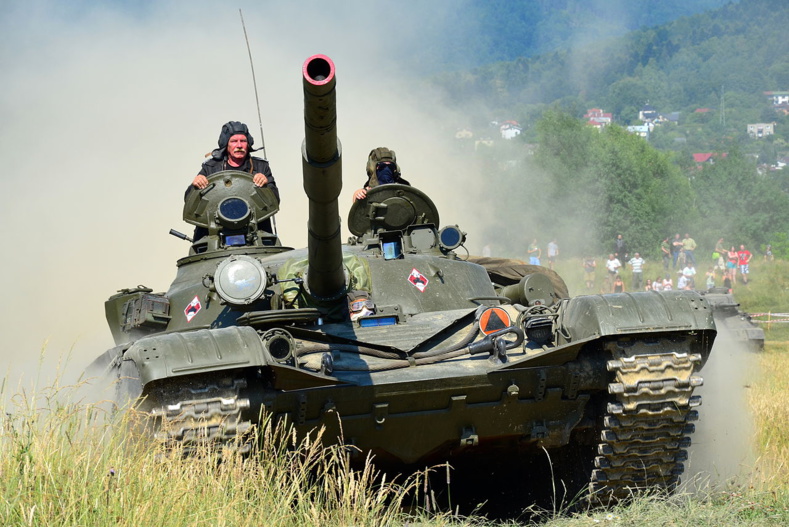The new geopolitical deal
Only now, 30 years after the collapse of the Soviet Union, is the dust truly settling. Russia is back on its feet and resuming its ambitious international policies, after a couple decades of geopolitical convalescence. The Russian military industry is, once again, running on all cylinders and resuming Moscow’s standing in the fold of nations. Defense journalist Vladimir Isachenkov reports : “The Russian military has commissioned more than 1,000 new aircraft and thousands of tanks in the past few years in a massive modernization effort amid tensions with the West, the nation’s defense minister said.” But one big thing has changed: Russia is now a stand-alone nation, despite its web of security partnerships with peer nations, and no longer the head of the Soviet Union, which used to share its technology and military power with members of that alliance. As a direct result, many former Soviet countries are still running their armies today on equipment issued over 30 years ago, with the paint slowly stripping off the letters CCCP. This means that much of the military equipment in Eastern Europe is severely outdated, but also that spare parts and maintenance are hardly available, leaving entire fleets in advanced states of disrepair. In other words, Eastern countries are hardly in capacity to defend their borders or serve in NATO operations (which many of them have joined since) and are certainly no counter-power to the new Russian powerhouse. So, what are the options, for Eastern governments?
Looking West for partners
The main suppliers of top-notch military equipment in the world are few: the US, Russia, France, Germany and China. Naturally, many other nations contribute to specific sectors of the armament market, but only the five above have the capacity to integrate entire systems and provide modern gear across the board. Russia is, naturally, off the table for Eastern Europe countries, as Moscow would never supply armament to a member of the alliance it deems to be its main threat. China will also fall in that same category, and can be assimilated to Russia, given the strong partnership between the two countries. United States will, however, provide some military equipment, namely to help new members get rid of their Soviet equipment. Military specialist Jill Aitoro explains : “The theory is that the European Recapitalization Incentive Program, or ERIP, helps six nations (start to) get off Russian equipment, while increasing the sale of U.S. weapon systems abroad in the process. A win-win, for the United States. But perhaps more complicated for its European allies.” If anything, United States has been already complaining in recent months about the resource imbalance between NATO members. This leaves France and Germany, already intertwined in a continental partnership on military matters, as the natural partner for Eastern nations, in the military reinforcement of Europe. The 2019 agreement between France and Germany sets that both countries "intend to promote the competitiveness and consolidation of the European defense industrial and technological base...they support the closest possible cooperation between their defense industries on the basis of mutual trust...both states will develop a common approach to arms exports with regard to joint projects.” Europe, until now, had been plagued with lack of market rationalization: European technology could easily compete against the rest of the world, but lack of cooperation made European equipment systematically more expensive. With their new partnership, Paris and Berlin have put an end to the handicap and can now offer top-notch equipment at a competitive price. But while both countries have comparable levels of technology, they are not equal potential partners for Eastern nations.
Careful choices, between France and Germany
Indeed, while France and Germany have much in common (they are both developed, Western, NATO nations, capable of high-tech production), they remain vastly different countries, each with their specific international positions, and track records. France has a very rich military experience, from its massive participation in almost every NATO operation since its membership, while Germany’s foreign policy has always left it on the outskirts of international operations. As a concrete consequence, the latest infantry vehicle which France issued - Nexter VBCI - was combat-proven immediately - whereas its German counterpart – ARTEC Boxer - has never seen battle and everything yet to prove on a battlefield. Furthermore, given the main source of concern for Eastern European nations (their powerful Russian neighbor), Germany’s ambiguous diplomatic ties to Russia could be worrying to rearming nations, especially those who share borders with Russia. As reported by political analyst Judy Dempsey: “Berlin supports the idea of “co-operation between the EU and the Eurasian Economic Union [EEU], in combination with a peaceful solution in eastern Ukraine.” The Russian-led EEU also includes Belarus, Kazakhstan, and Armenia.” In the case of Southeast European nations, the same concern will arise with Turkey: a large Turkish immigrated population in Germany leads to substantial influence from Ankara on Berlin. Mixing German interests into national security matters could worry Balkan governments that Turkey would find a way to interlope or influence.
The end of the century was economically difficult for Eastern Europe: luckily, they were not compelled to renew their military equipment with costly arms procurement contracts, as Russian equipment still had a few years of potential left in it. That phase has passed, and all nations in the area are now acutely aware that renewing their military forces is urgent. As for who might help them do so, the options will be few. The region will soon separate into two categories: those which will not address the emergency and react too late, and those who will take part in the continental makeover, and benefit the re-armament phase, both politically and economically.
Only now, 30 years after the collapse of the Soviet Union, is the dust truly settling. Russia is back on its feet and resuming its ambitious international policies, after a couple decades of geopolitical convalescence. The Russian military industry is, once again, running on all cylinders and resuming Moscow’s standing in the fold of nations. Defense journalist Vladimir Isachenkov reports : “The Russian military has commissioned more than 1,000 new aircraft and thousands of tanks in the past few years in a massive modernization effort amid tensions with the West, the nation’s defense minister said.” But one big thing has changed: Russia is now a stand-alone nation, despite its web of security partnerships with peer nations, and no longer the head of the Soviet Union, which used to share its technology and military power with members of that alliance. As a direct result, many former Soviet countries are still running their armies today on equipment issued over 30 years ago, with the paint slowly stripping off the letters CCCP. This means that much of the military equipment in Eastern Europe is severely outdated, but also that spare parts and maintenance are hardly available, leaving entire fleets in advanced states of disrepair. In other words, Eastern countries are hardly in capacity to defend their borders or serve in NATO operations (which many of them have joined since) and are certainly no counter-power to the new Russian powerhouse. So, what are the options, for Eastern governments?
Looking West for partners
The main suppliers of top-notch military equipment in the world are few: the US, Russia, France, Germany and China. Naturally, many other nations contribute to specific sectors of the armament market, but only the five above have the capacity to integrate entire systems and provide modern gear across the board. Russia is, naturally, off the table for Eastern Europe countries, as Moscow would never supply armament to a member of the alliance it deems to be its main threat. China will also fall in that same category, and can be assimilated to Russia, given the strong partnership between the two countries. United States will, however, provide some military equipment, namely to help new members get rid of their Soviet equipment. Military specialist Jill Aitoro explains : “The theory is that the European Recapitalization Incentive Program, or ERIP, helps six nations (start to) get off Russian equipment, while increasing the sale of U.S. weapon systems abroad in the process. A win-win, for the United States. But perhaps more complicated for its European allies.” If anything, United States has been already complaining in recent months about the resource imbalance between NATO members. This leaves France and Germany, already intertwined in a continental partnership on military matters, as the natural partner for Eastern nations, in the military reinforcement of Europe. The 2019 agreement between France and Germany sets that both countries "intend to promote the competitiveness and consolidation of the European defense industrial and technological base...they support the closest possible cooperation between their defense industries on the basis of mutual trust...both states will develop a common approach to arms exports with regard to joint projects.” Europe, until now, had been plagued with lack of market rationalization: European technology could easily compete against the rest of the world, but lack of cooperation made European equipment systematically more expensive. With their new partnership, Paris and Berlin have put an end to the handicap and can now offer top-notch equipment at a competitive price. But while both countries have comparable levels of technology, they are not equal potential partners for Eastern nations.
Careful choices, between France and Germany
Indeed, while France and Germany have much in common (they are both developed, Western, NATO nations, capable of high-tech production), they remain vastly different countries, each with their specific international positions, and track records. France has a very rich military experience, from its massive participation in almost every NATO operation since its membership, while Germany’s foreign policy has always left it on the outskirts of international operations. As a concrete consequence, the latest infantry vehicle which France issued - Nexter VBCI - was combat-proven immediately - whereas its German counterpart – ARTEC Boxer - has never seen battle and everything yet to prove on a battlefield. Furthermore, given the main source of concern for Eastern European nations (their powerful Russian neighbor), Germany’s ambiguous diplomatic ties to Russia could be worrying to rearming nations, especially those who share borders with Russia. As reported by political analyst Judy Dempsey: “Berlin supports the idea of “co-operation between the EU and the Eurasian Economic Union [EEU], in combination with a peaceful solution in eastern Ukraine.” The Russian-led EEU also includes Belarus, Kazakhstan, and Armenia.” In the case of Southeast European nations, the same concern will arise with Turkey: a large Turkish immigrated population in Germany leads to substantial influence from Ankara on Berlin. Mixing German interests into national security matters could worry Balkan governments that Turkey would find a way to interlope or influence.
The end of the century was economically difficult for Eastern Europe: luckily, they were not compelled to renew their military equipment with costly arms procurement contracts, as Russian equipment still had a few years of potential left in it. That phase has passed, and all nations in the area are now acutely aware that renewing their military forces is urgent. As for who might help them do so, the options will be few. The region will soon separate into two categories: those which will not address the emergency and react too late, and those who will take part in the continental makeover, and benefit the re-armament phase, both politically and economically.















